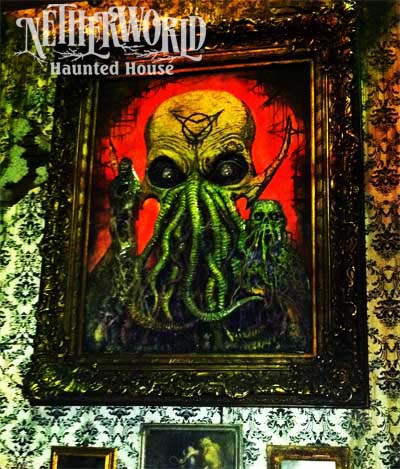“In his house at R’lyeh, dead Cthulhu waits dreaming.”
History is abundant with tales of ancient gods and spiritual beings who span both centuries and worlds, lying in wait for the day they will resurface and reclaim the planet. Some are forces of good, others agents of pure evil, all striking a necessary balance in the supernatural order of things.
Perhaps the most notorious – and feared – is the ancient entity known as Cthulhu. First brought to public awareness in the 1928 H.P. Lovecraft short story “The Call of Cthulhu”, this malevolent creature was said to be trapped in a South Pacific underwater city called R’lyeh. Lovecraft described Cthulhu as “…an octopus, a dragon, and a human caricature…. a pulpy, tentacled head surmounted a grotesque scaly body with rudimentary wings”. Some said to look upon him could cause insanity and a lack of reason. Legend told that he was an extraterrestrial that ruled the Earth from R’lyeh for eons, creating great cities and temples, introducing man to art and statuary from other worlds, derived from materials unknown to our planet. Shortly after the appearance of mortal man, R’lyeh sank into the ocean, and Cthulhu was trapped beneath the surface. Imprisoned, it was believed that this dark deity was the cause of great subconscious anxiety among mankind. He was worshipped by several religions throughout the earth, who awaited his return, chanting over and over of his unimaginable power as they waited for the stars to align to harken his resurrection from the deep.
The Cult of Cthulhu envisioned a day when the great creature would reclaim his ancient dominion over Earth, when chaos would prevail and notions of civilization would no longer be relevant. Man would return to his most primal, base instincts, and inhibition would be lost forever. They believed that the creative mind (the author, the artist – the insane) was most receptive to the power of Cthulhu. He could communicate with them telepathically, and it was this mental connection that kept his presence known to generations to come. Soon, the notion of Cthulhu had permeated the human mind and his existence infiltrated many aspects of our day-to-day life.
The mythos of Cthulhu spread its ancient roots, taking hold in film, literature, and practically every medium of popular culture. Artists answered the eerie call of the deep muse, paying tribute through painting and sculpture. Writers picked up where Lovecraft left off, documenting tale after tale of the Elder Thing’s ever-increasing power, and his influence over the legions of worshippers clamoring for his reawakening. The grim visage of otherworldly evil has been portrayed in everything from video games to stuffed toys, and even inspired the naming of Californian spider species ‘Pimoa cthulhu’ by Gustavo Hormiga in 1994. There can be no denying his omnipotence…
Certainly Cthulhu’s influence is felt throughout the subterranean chambers of NETHERWORLD Haunted House. No one can deny the constant wave of anxiety and dread that resonates among the human mortals who dare enter. Truly there is no heavier concentration of creative minds than inside America’s leading haunted attraction, possibly receiving subconscious communication from the deep one. His essence can be felt in the air as you wind your way through the stygian darkness – summoning you deeper and farther into the very heart of madness.


